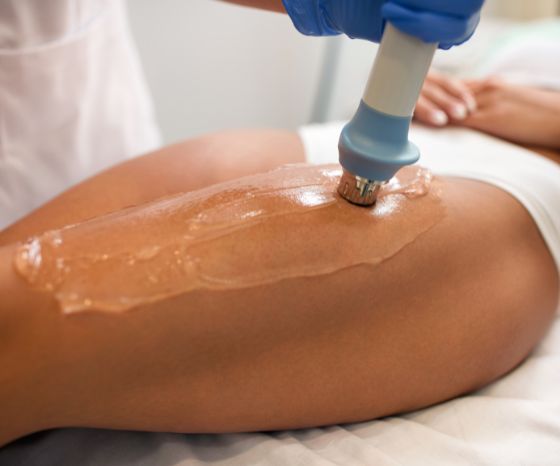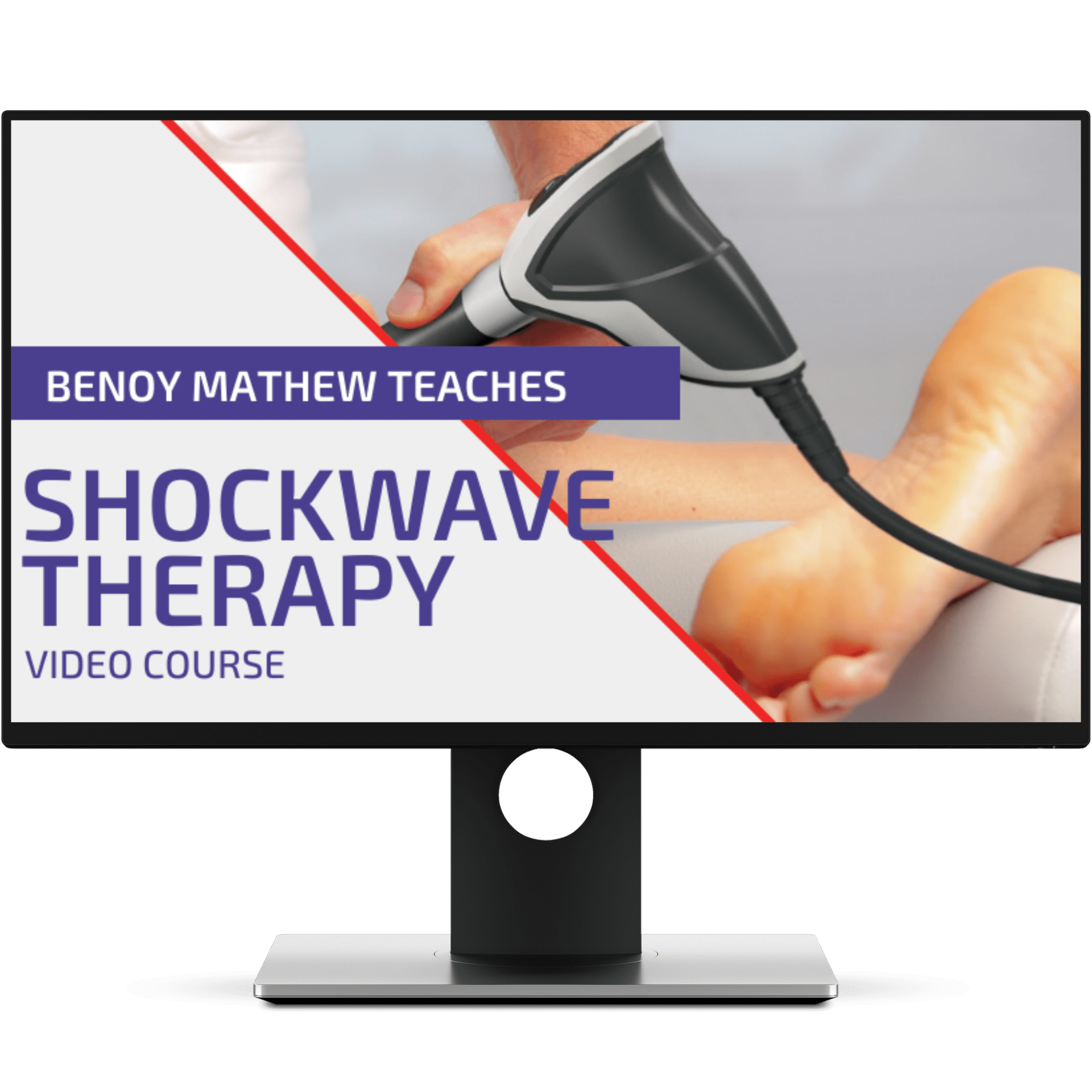The Role of Shockwave Therapy in the Management of Chronic Tendinopathy – Common Q&As

Shockwave therapy is a well-established treatment modality for patients with chronic musculoskeletal (MSK) pathologies such as tendinopathy. There has been growing interest in this treatment modality due to the growing evidence base and safety profile in various MSK disorders.
In my clinical practice, I have used shockwave regularly since 2014 and have been teaching it for more than 5 years. Find below some common queries, which are raised by MSK therapists, during my training courses.
What is shockwave therapy and how does it work for musculoskeletal injuries?
Shockwave therapy, also known as extracorporeal shockwave therapy (ESWT), is a non-invasive medical treatment used to treat various musculoskeletal conditions, such as plantar fasciitis, tennis elbow, and Achilles tendinopathy. The therapy works by delivering high-energy sound waves, or shockwaves, to the affected area. The high-energy sound waves cause a reaction in the affected tissue, which stimulates the cells to produce new blood vessels, collagen fibers, and bone tissue. This helps to reduce pain, improve circulation, and promote the healing of damaged tissue.
Shockwave therapy is typically performed as an outpatient procedure and does not require anesthesia or incisions. The number of sessions required and the specific protocol for each individual will vary depending on the type and severity of the injury.
How effective is shockwave therapy for treating common MSK conditions like Achilles Tendinopathy and Greater Trochanteric Pain Syndrome (GTPS)?
The effectiveness of shockwave therapy for treating conditions like plantar fasciitis Achilles tendinopathy and GTPS can vary depending on various factors, such as the severity and duration of the condition, the patient’s age and overall health, and the presence of any underlying medical conditions. However, in general, shockwave therapy has been found to be a safe and effective treatment option for many patients with these types of musculoskeletal conditions.
Multiple Studies have shown that shockwave therapy can reduce pain and improve function in patients with plantar fasciitis, Achilles tendinopathy, greater trochanteric pain syndrome, and other similar conditions.
Multiple studies have shown that shockwave therapy can reduce pain and improve function in patientsin various tendinopathies
What are the benefits and risks of shockwave therapy?
Benefits of shockwave therapy compared to other treatments for musculoskeletal injuries include:
- Non-invasive: Shockwave therapy is a non-invasive treatment option, meaning it does not require surgery or incisions.
- Reduced pain: Many patients experience a reduction in pain after shockwave therapy, making it a good option for those who want to avoid or minimize the use of pain medications.
- Minimal downtime: Shockwave therapy sessions are usually less than 10 minutes, and patients can often return to their normal activities immediately after the procedure.
- Improved function: Many patients report improved function and mobility after shockwave therapy, making it a good option for those who want to get back to their normal activities as quickly as possible.
It is generally considered safe and effective for most people, although some individuals may experience a temporary discomfort or side effects such as swelling or redness at the treatment site.
Shockwave Therapy
Speed up your Athlete’s Load Bearing Tolerance by Integrating Shockwave into Exercise Therapy!

How many shockwave therapy sessions are typically required for improvement in chronic tendinopathy?
The number of shockwave therapy sessions required for improvement can vary depending on various factors, such as the type and severity of the musculoskeletal injury, the patient’s age and overall health, and the presence of any underlying conditions. On average, patients may require anywhere from three to five shockwave therapy sessions to see improvement, with each session, usually less than 10 minutes.
The specific protocol for each individual will depend on their individual needs and the recommendation of their medical professional. Some patients may see improvement in the pain levels after just one or two shockwave therapy sessions, while the majority see benefits, usually after 4-6 weeks from the initial treatment. The full effect of SWT usually takes around 12 weeks.
Can shockwave therapy be used in conjunction with other treatments, such as exercises and soft-tissue techniques?
Yes, shockwave therapy can be used in conjunction with other treatments, such as physiotherapy. In fact, many healthcare providers recommend a combination of shockwave therapy and exercise programs for optimal results. For example, physiotherapy can help to improve flexibility, strength, and range of motion, while shockwave therapy can help to reduce pain and promote healing. A study by Rompe et al. (2009) had shown that a combination of SWT and exercises was superior to exercises alone at 4 months follow-up in the management of Achilles tendinopathy
It’s important to discuss the best treatment plan for your individual needs with a medical professional and to keep them informed of any other treatments you may be receiving. This can help to ensure that all treatments are complementary and will not interfere with one another.
If you are interested in learning more about the practical application of SWT in common tendinopathy, then check out our online course on SWT.
Key articles for further reading on SWT are in the reference below.
Thanks a lot for reading!
Benoy
References

Benoy Mathew
Benoy Mathew
MSc MAACP MCSP HPC RegisteredP MCSP HPC Registered
NEW BLOG ARTICLES IN YOUR INBOX
Subscribe now and receive a notification once the latest blog article is published.







